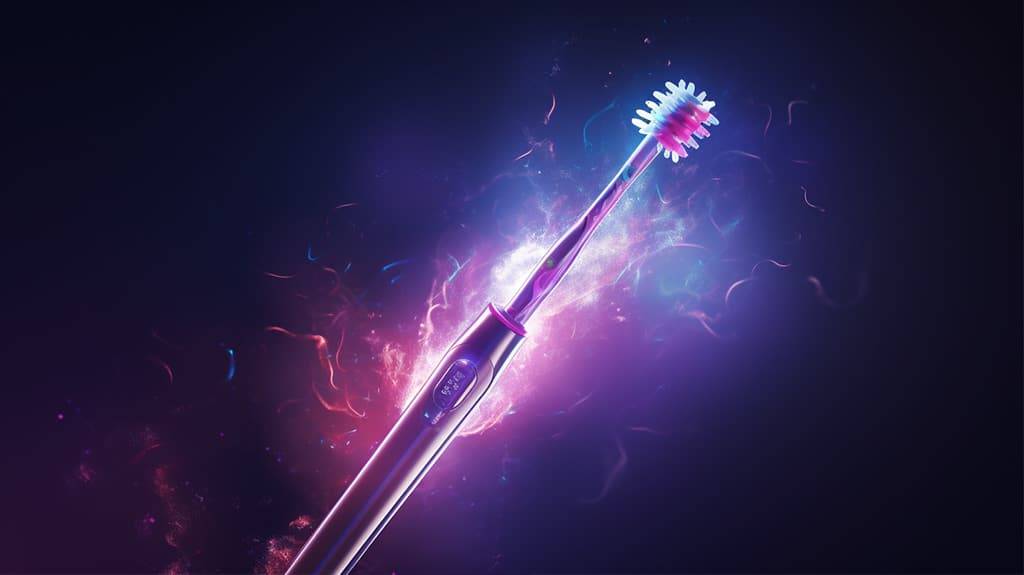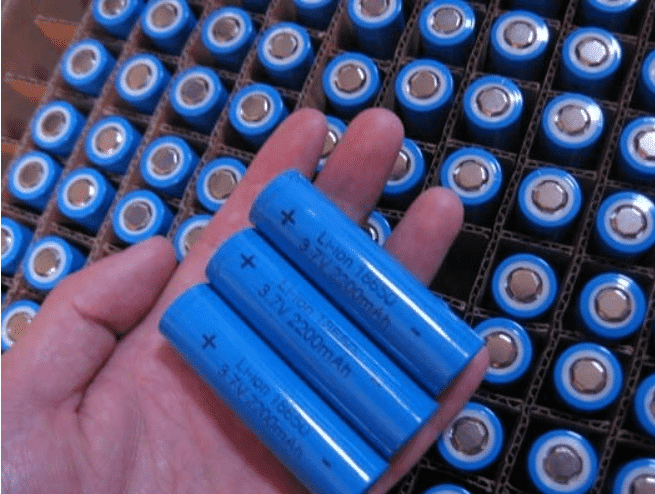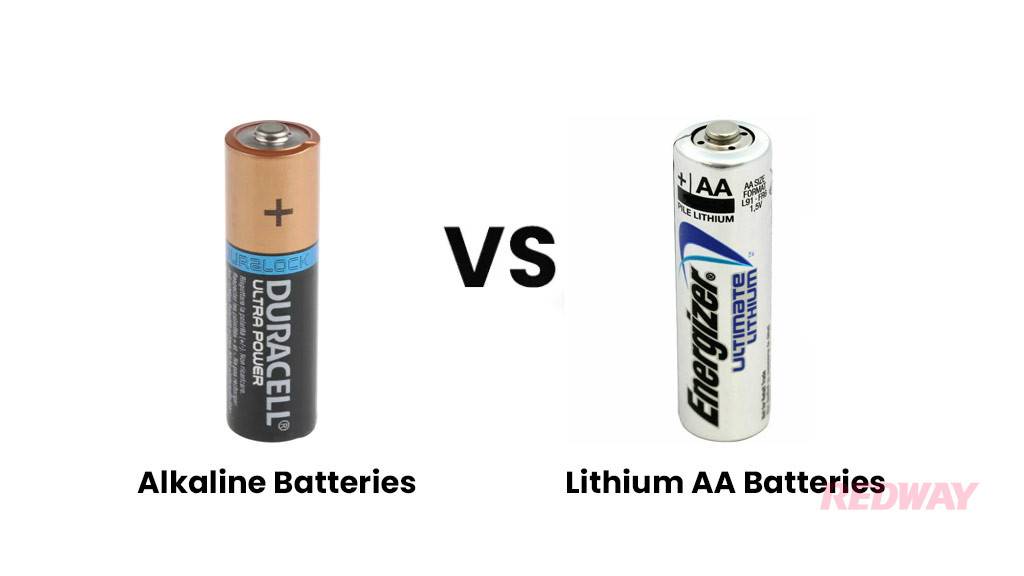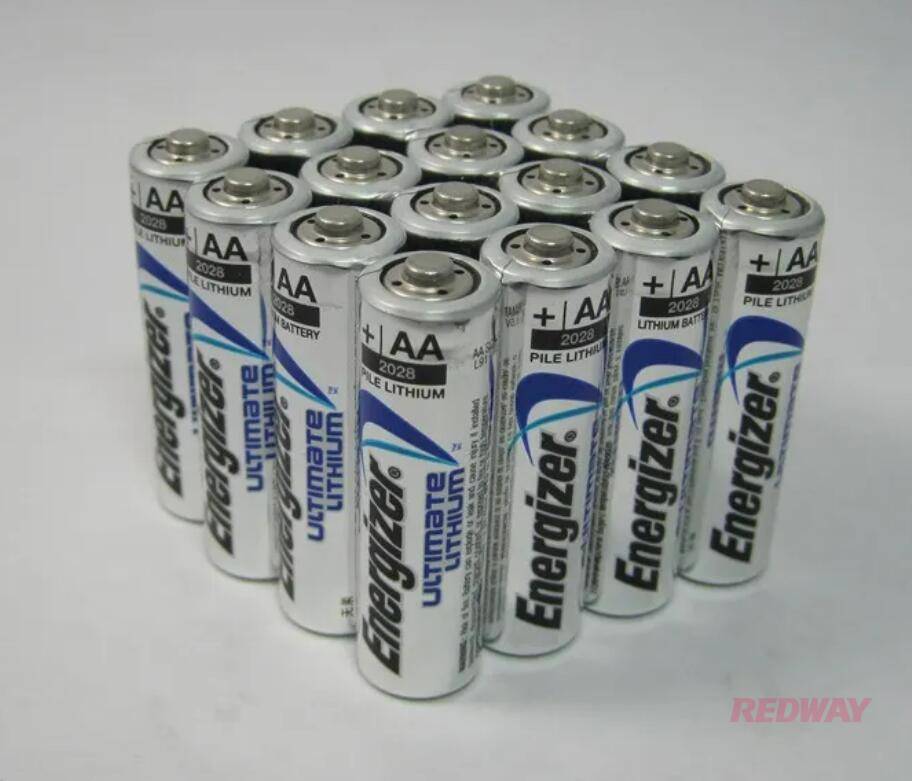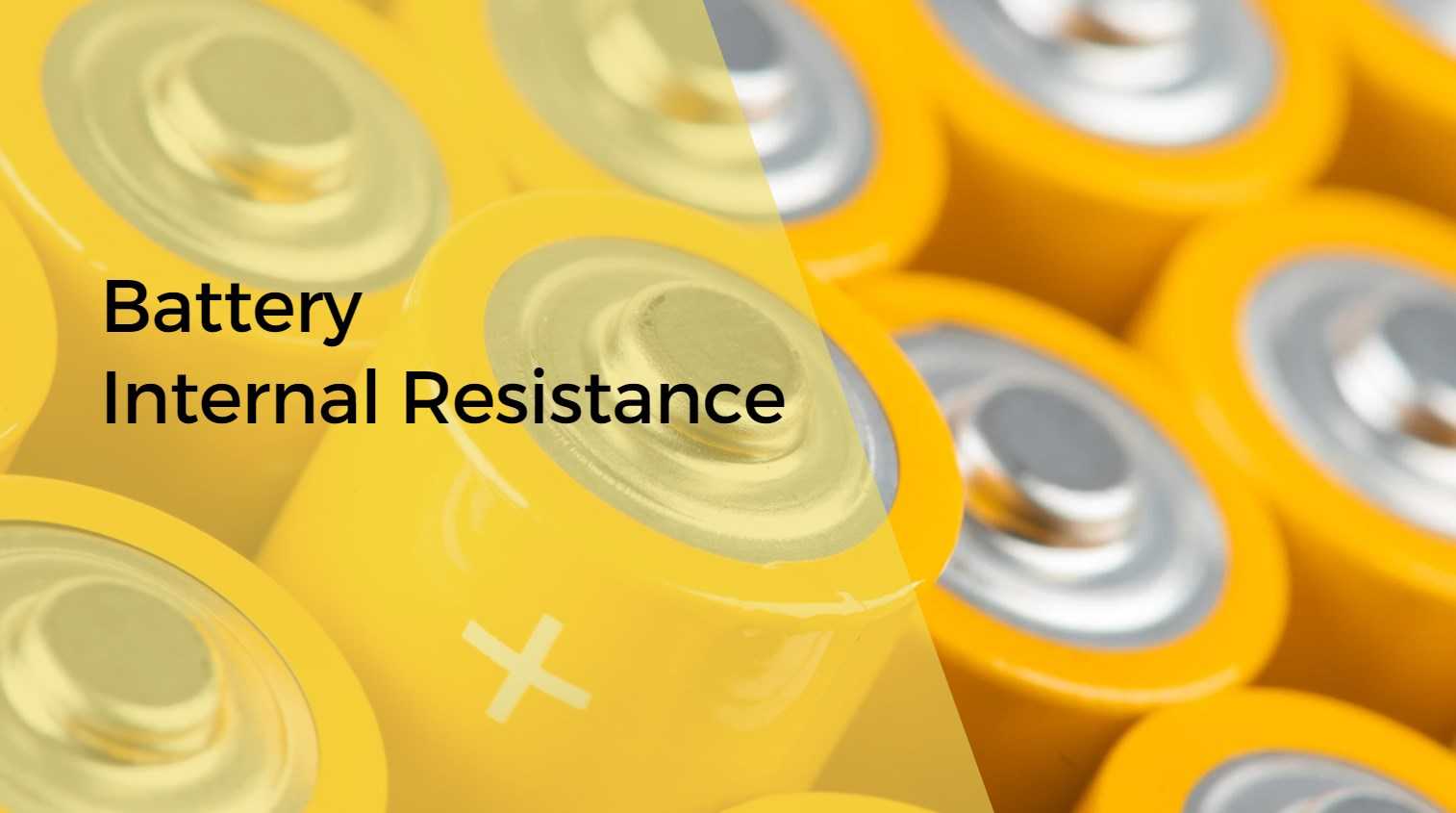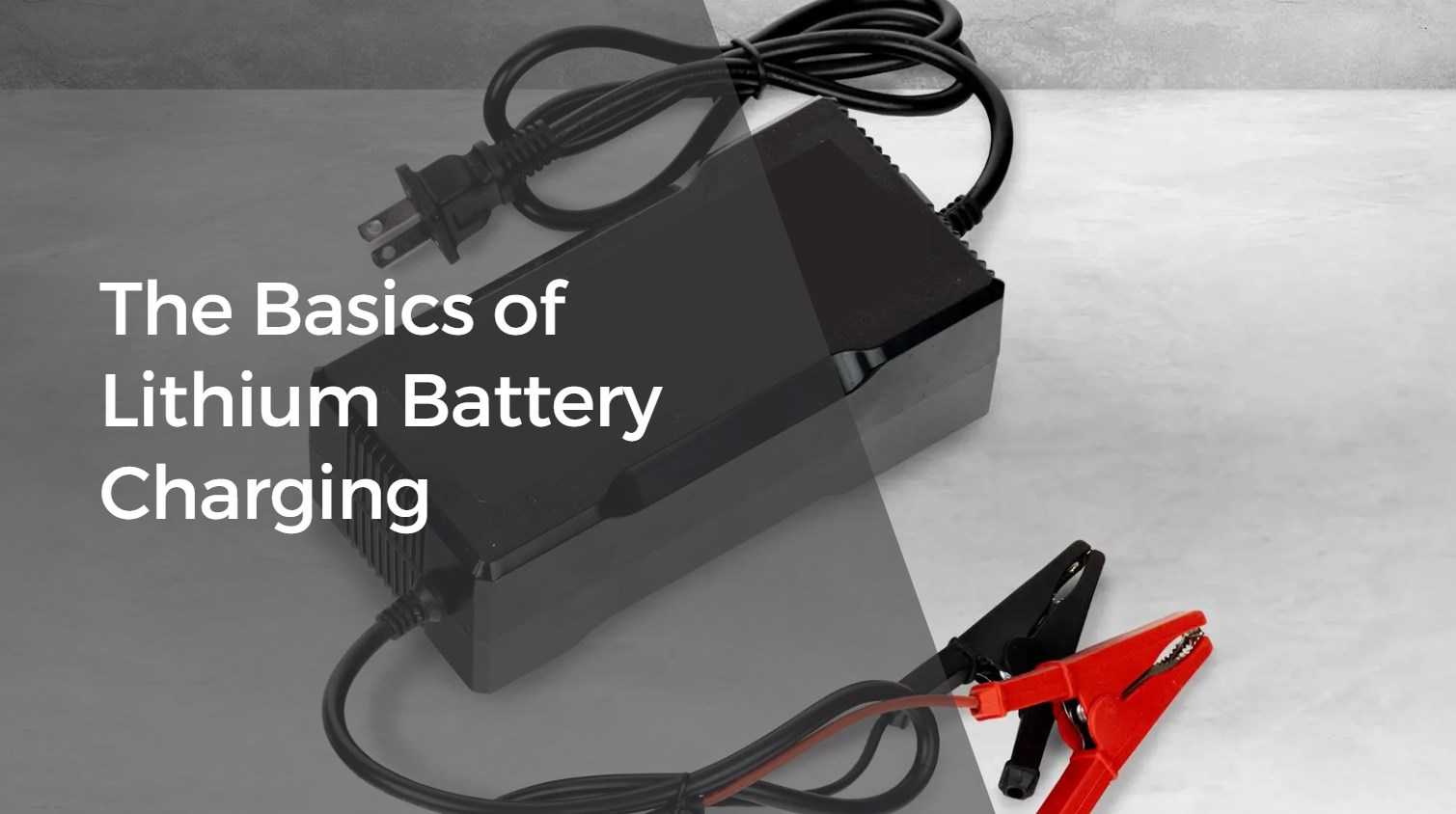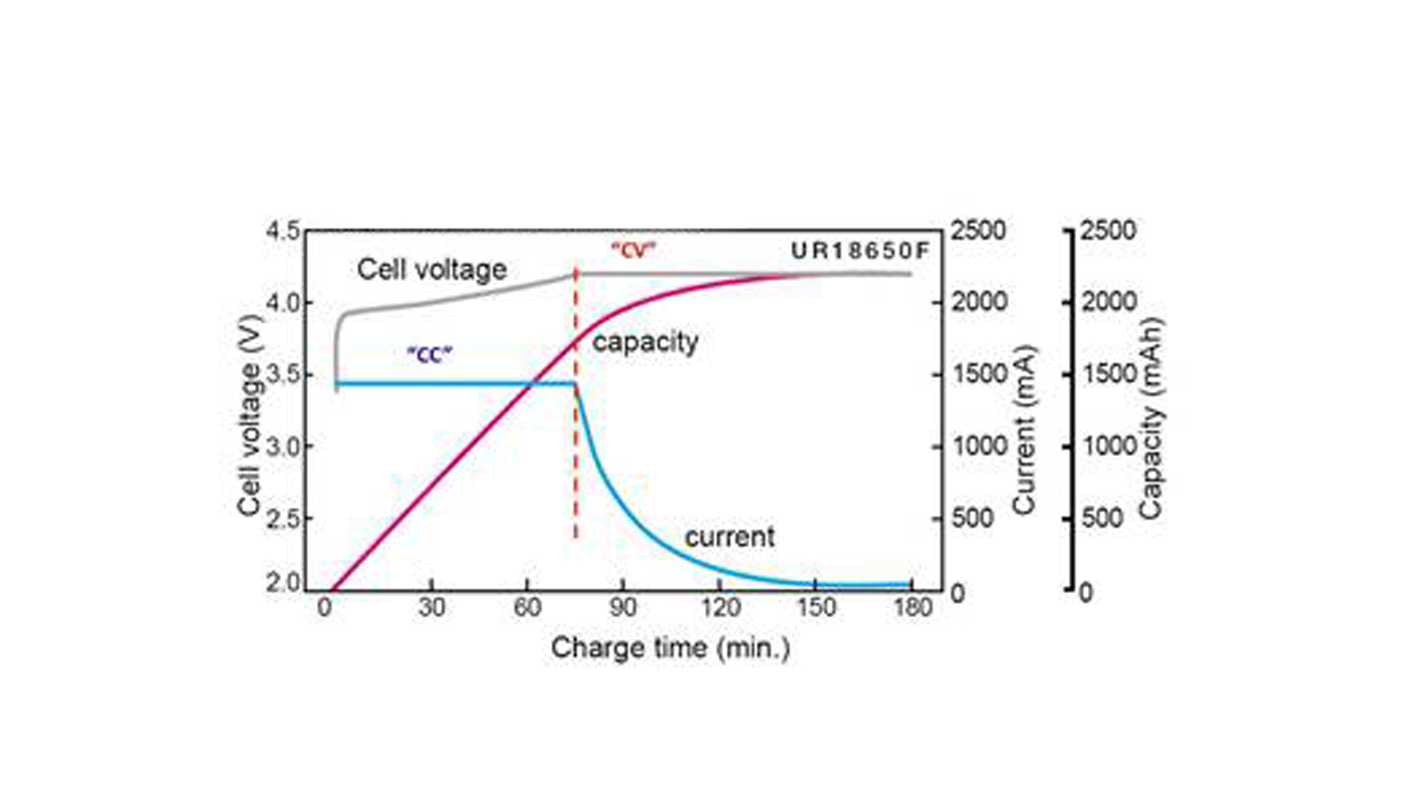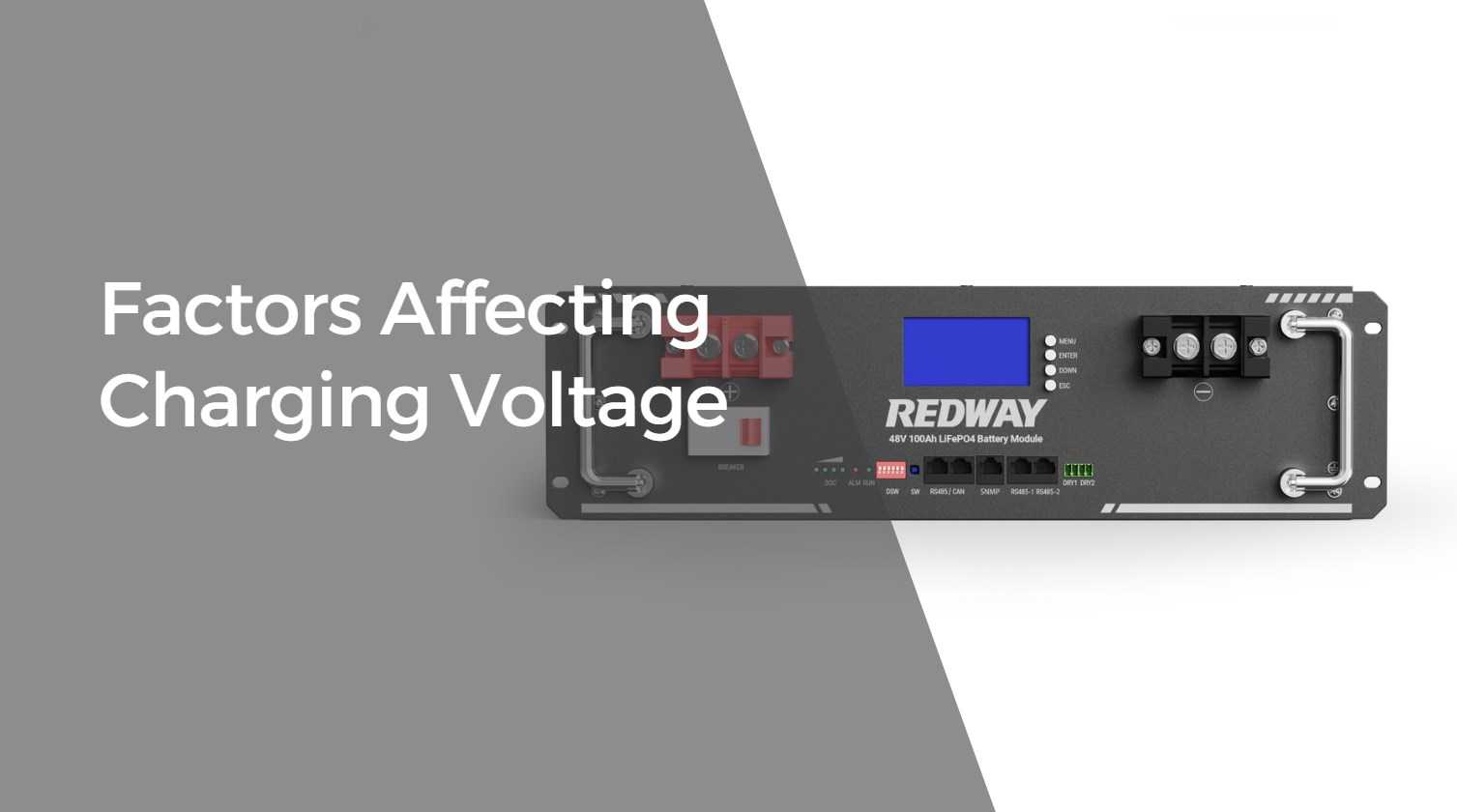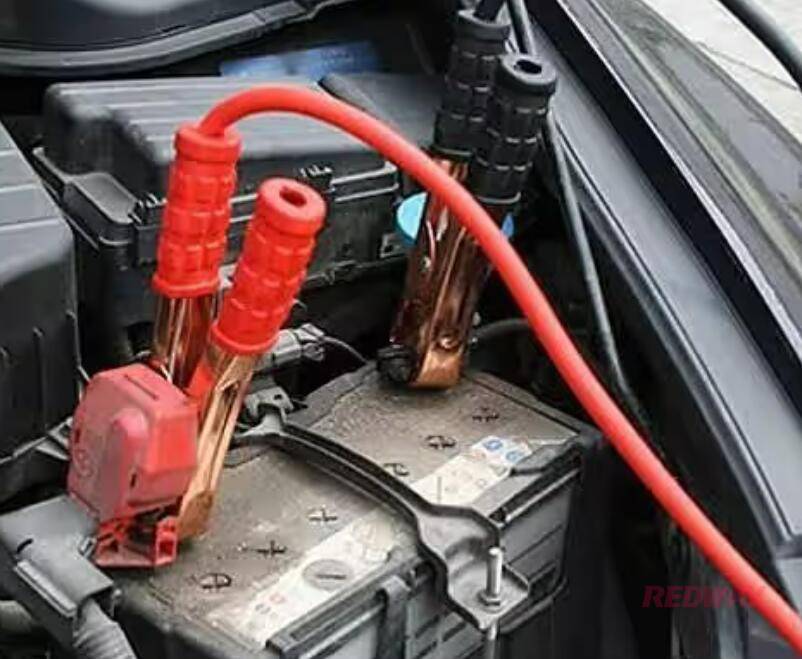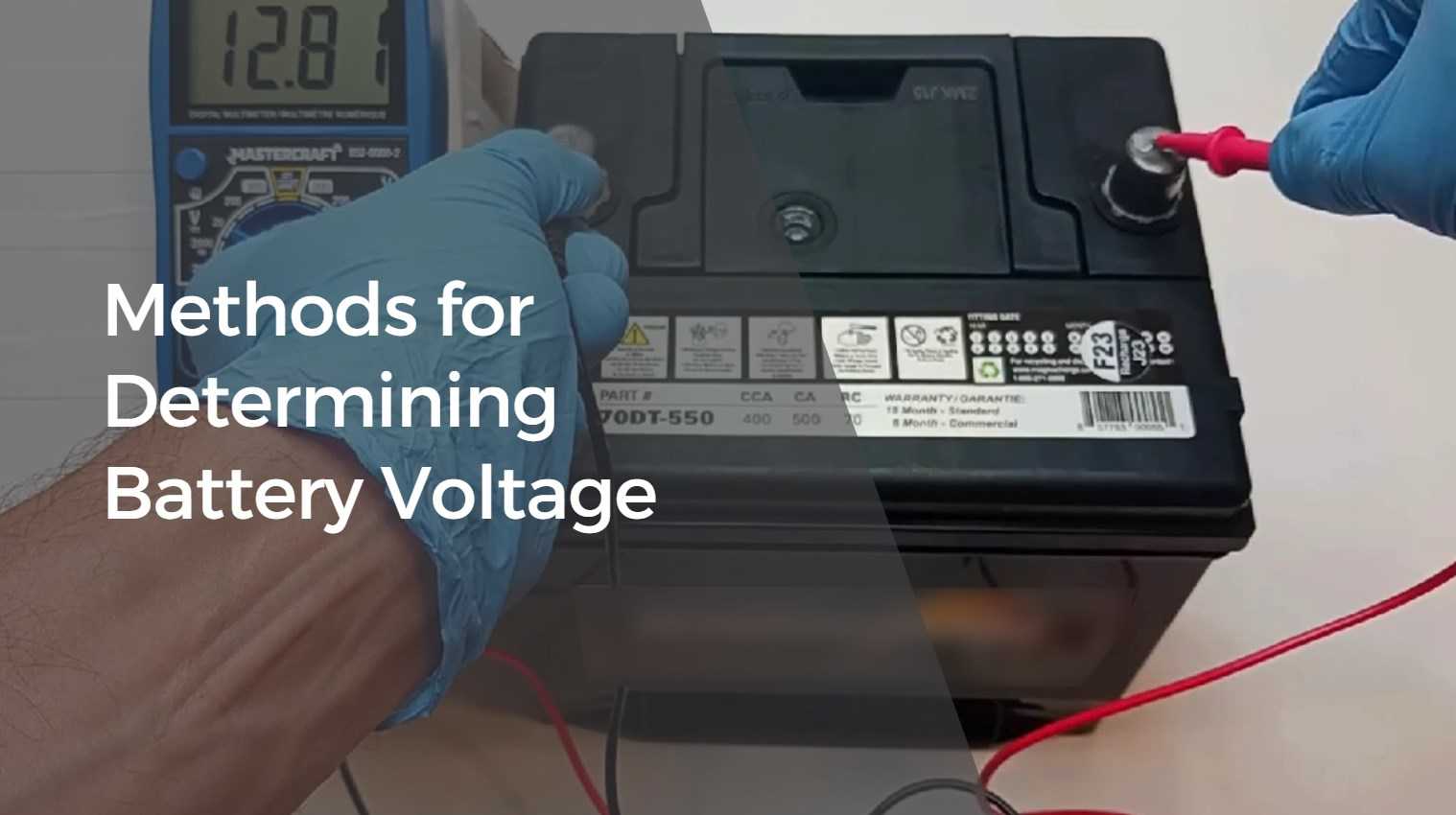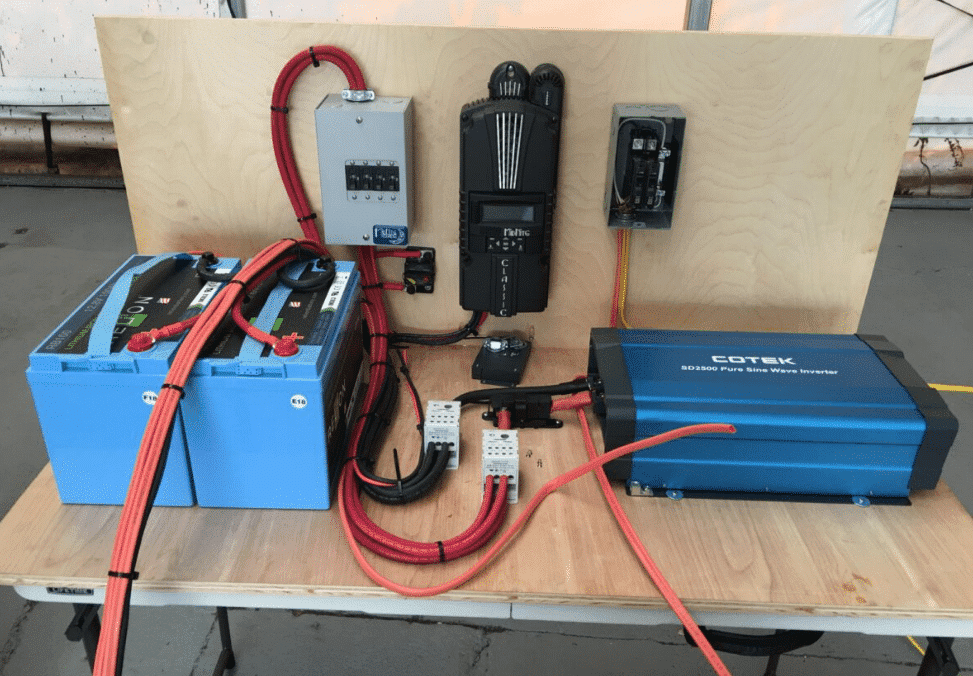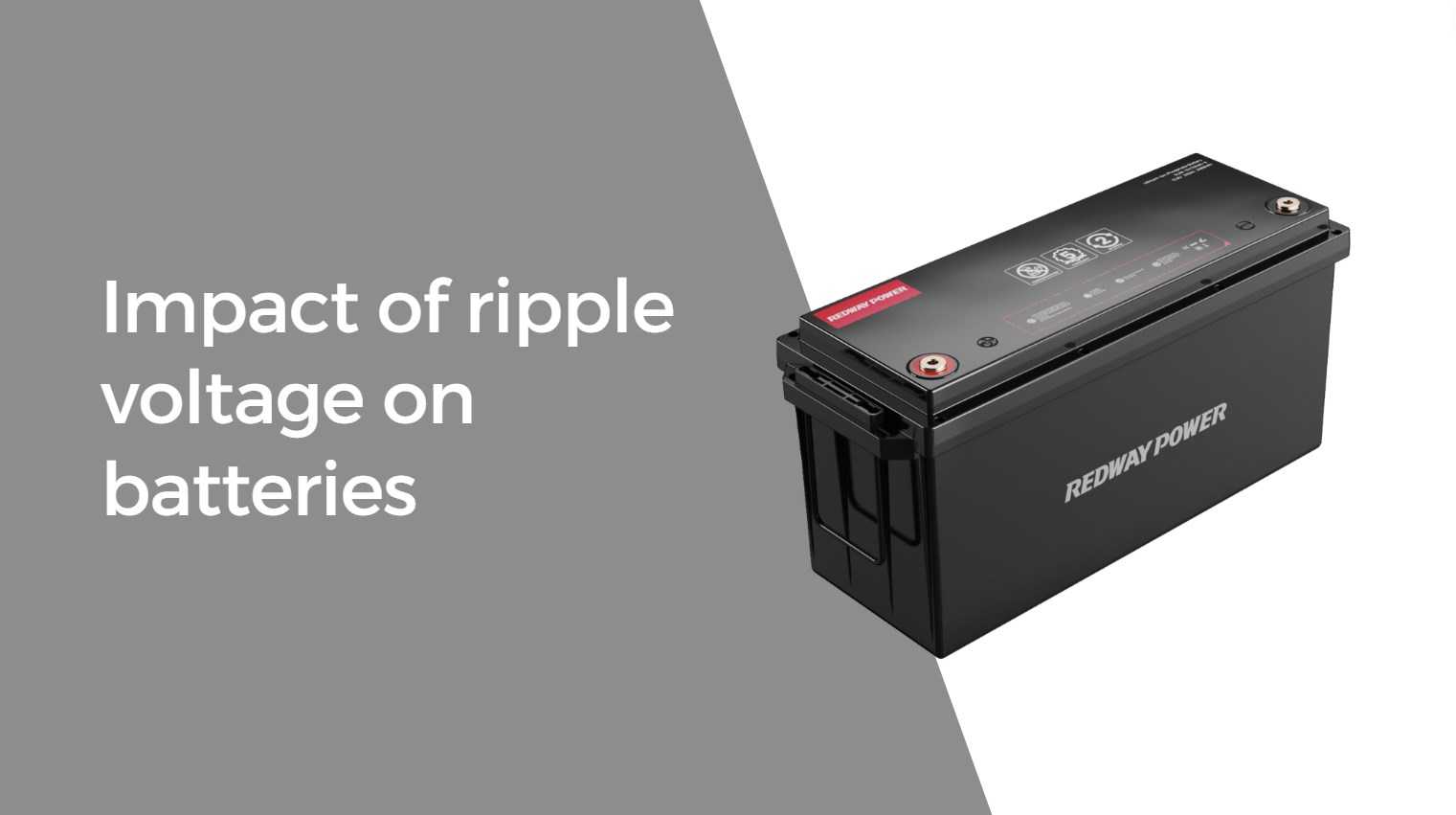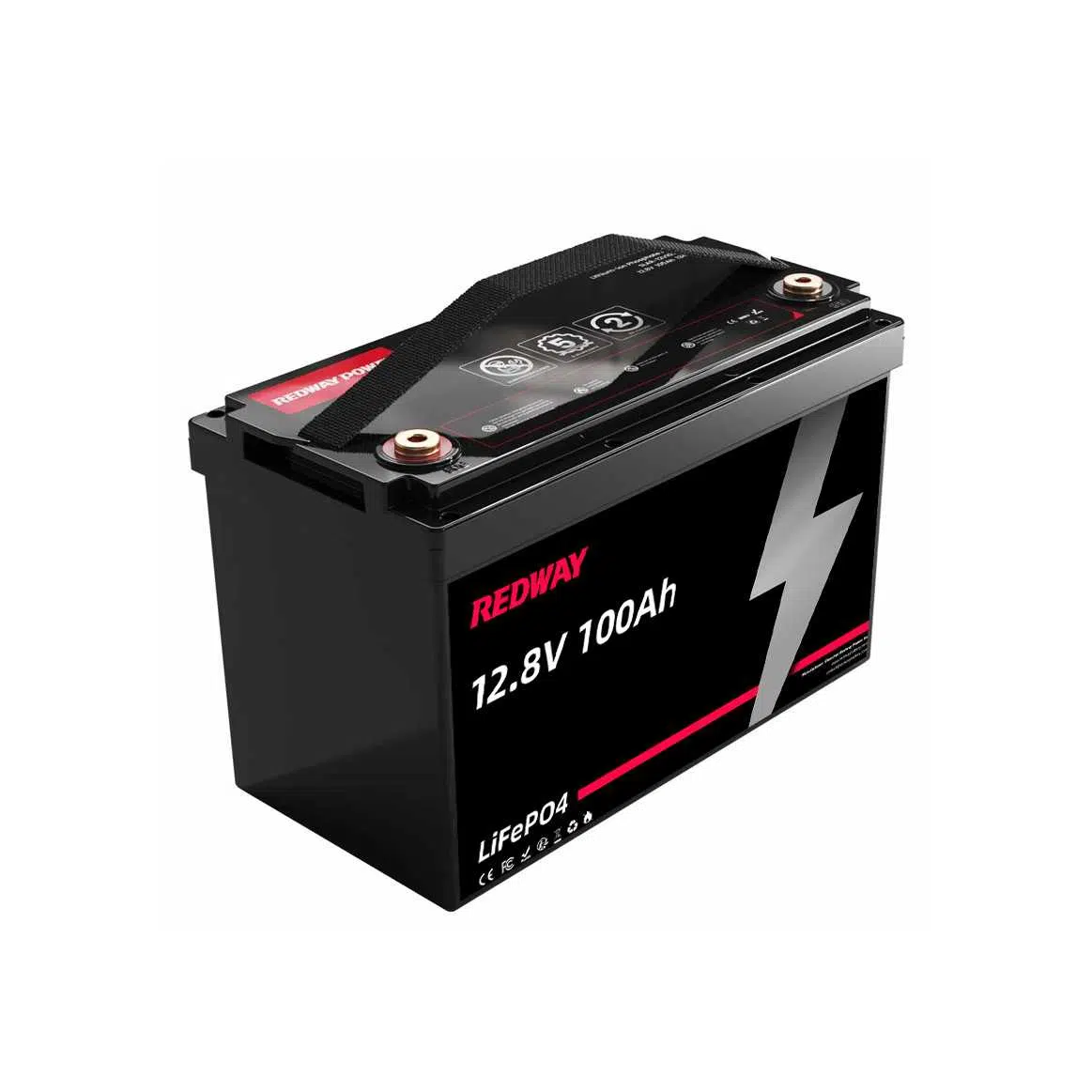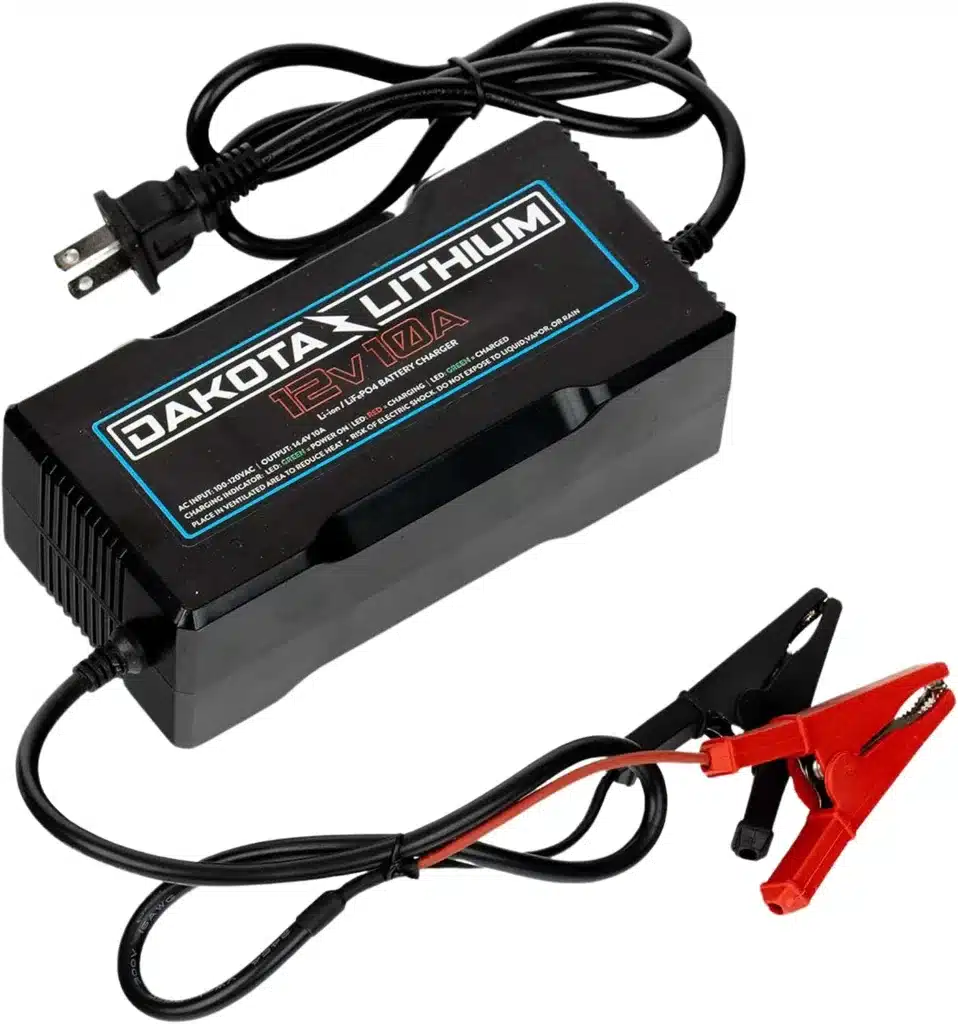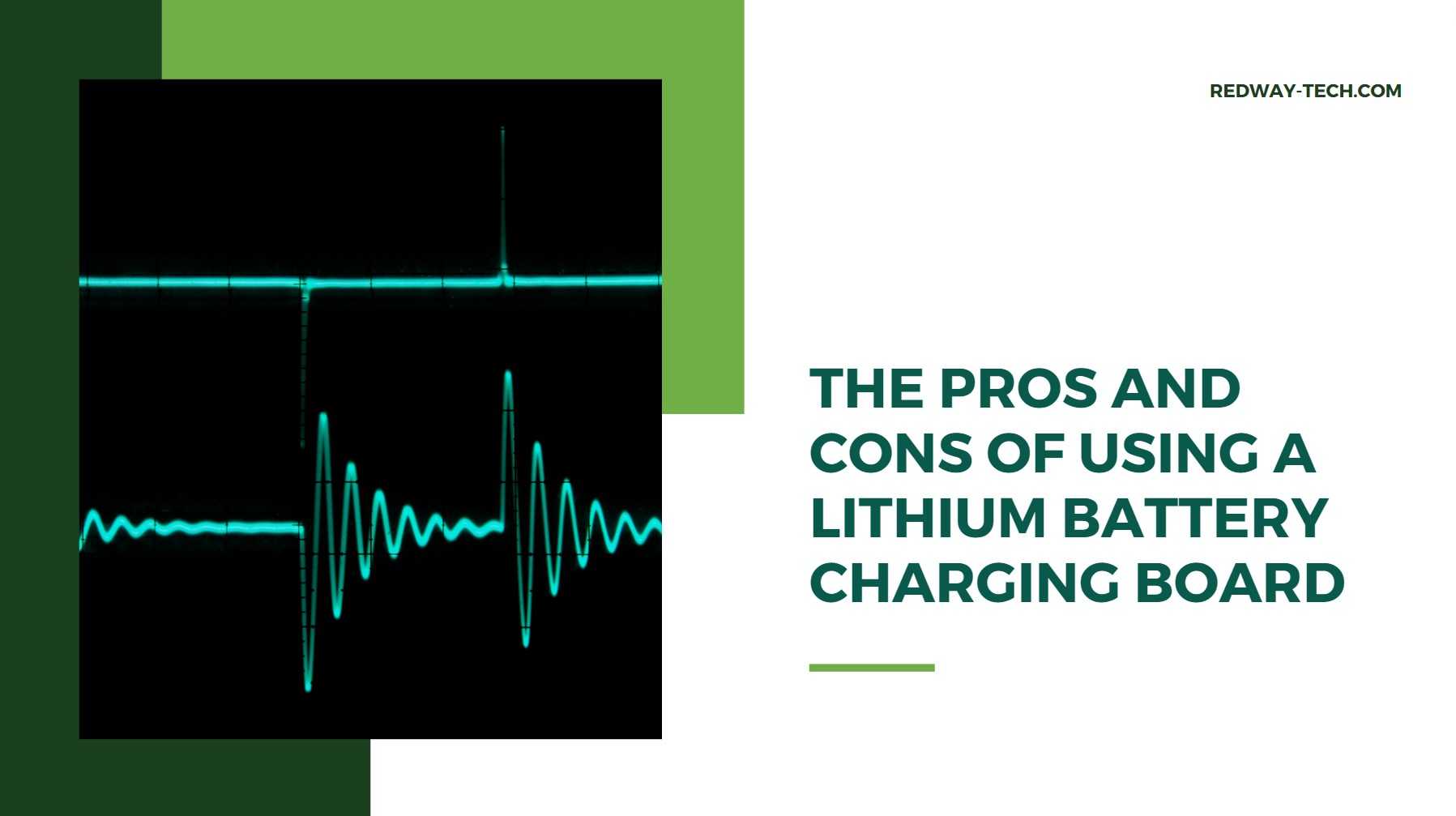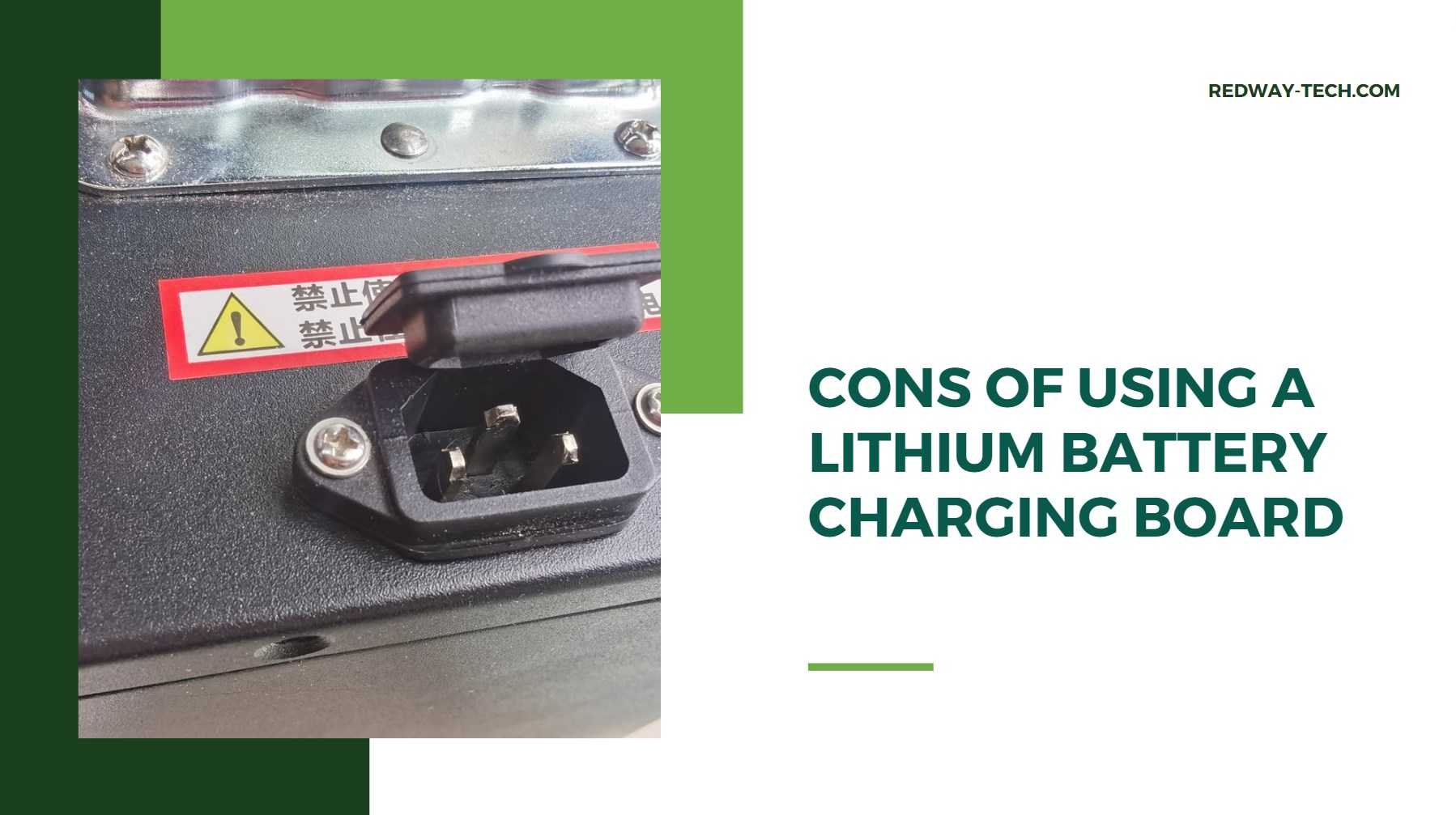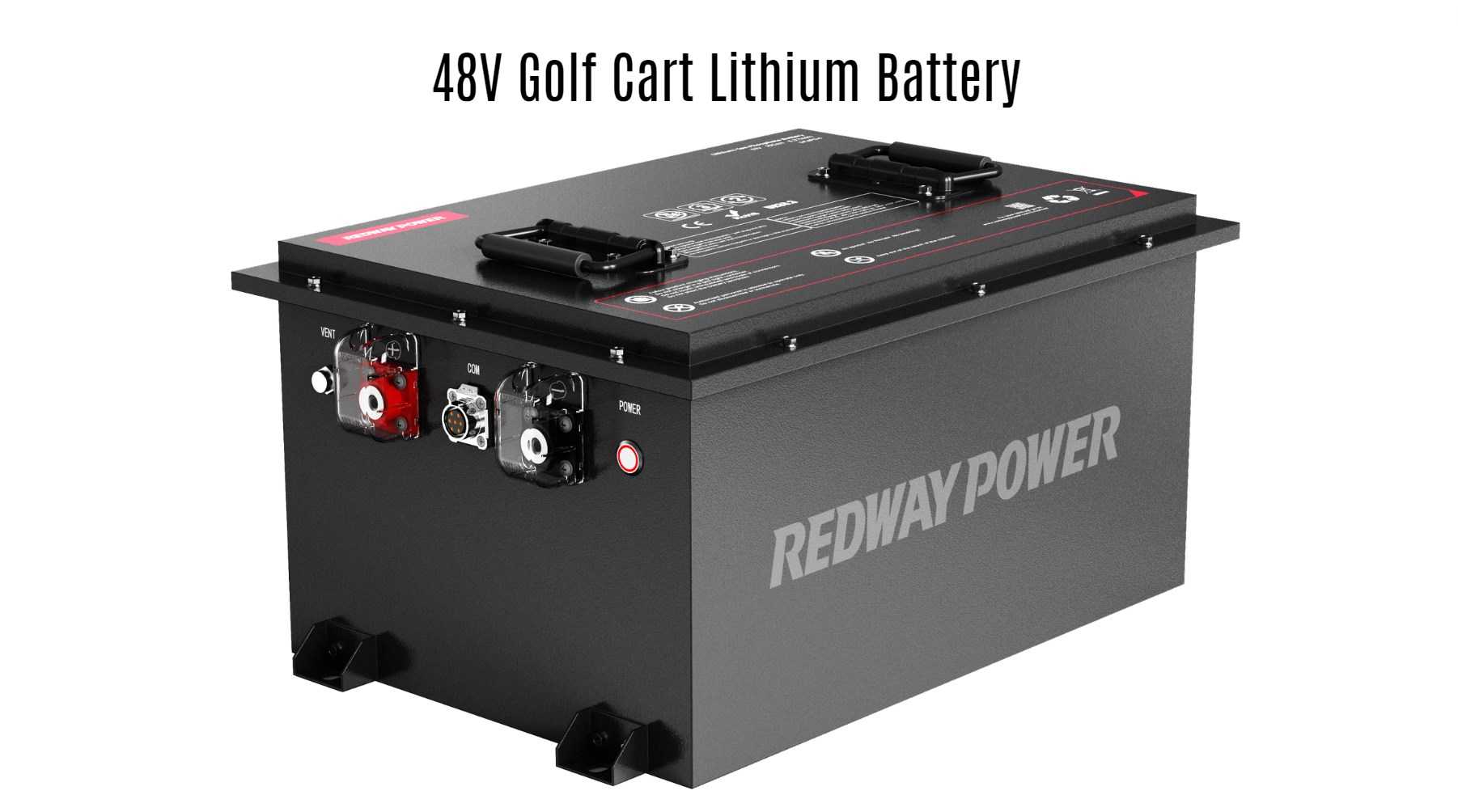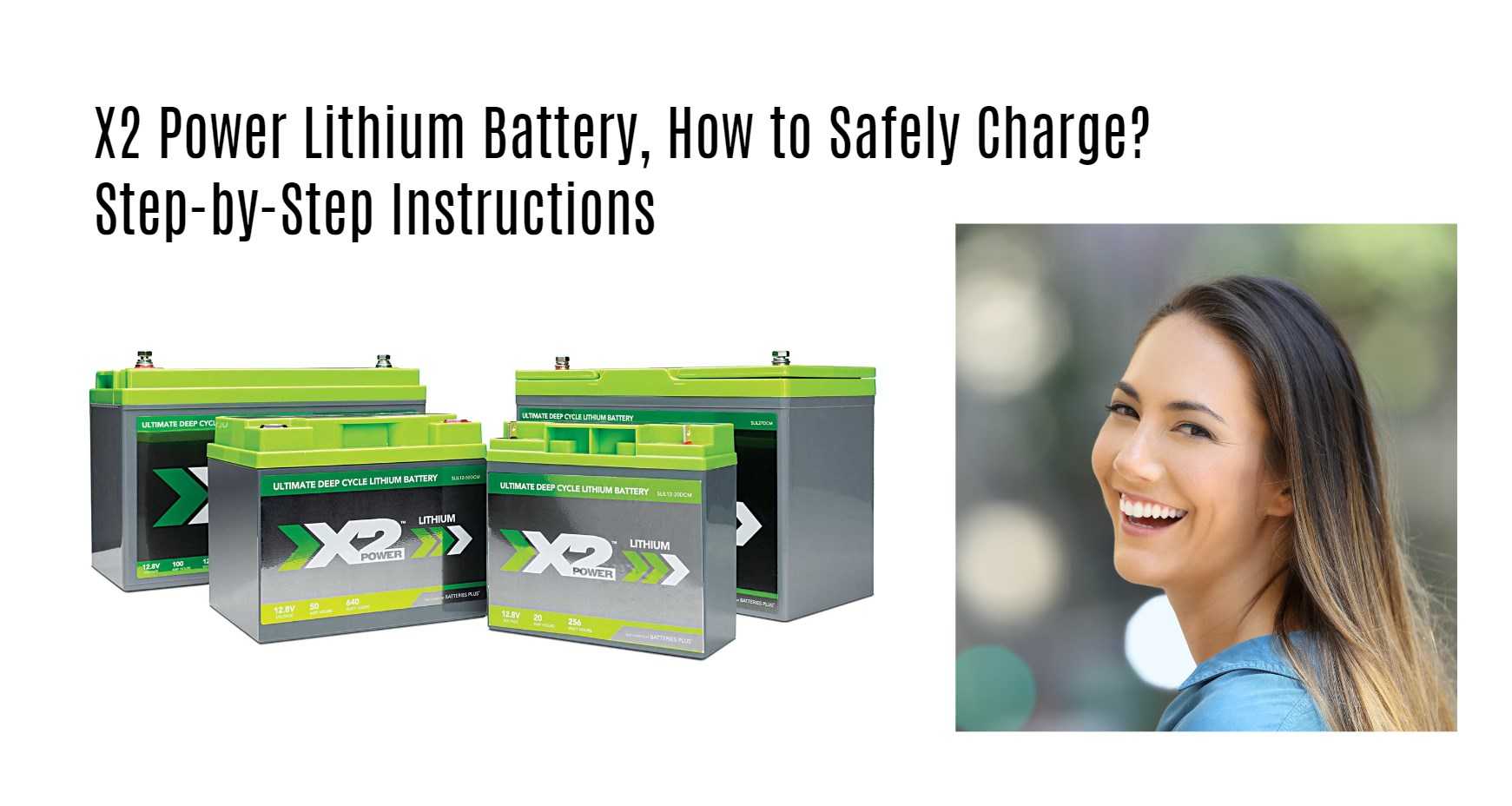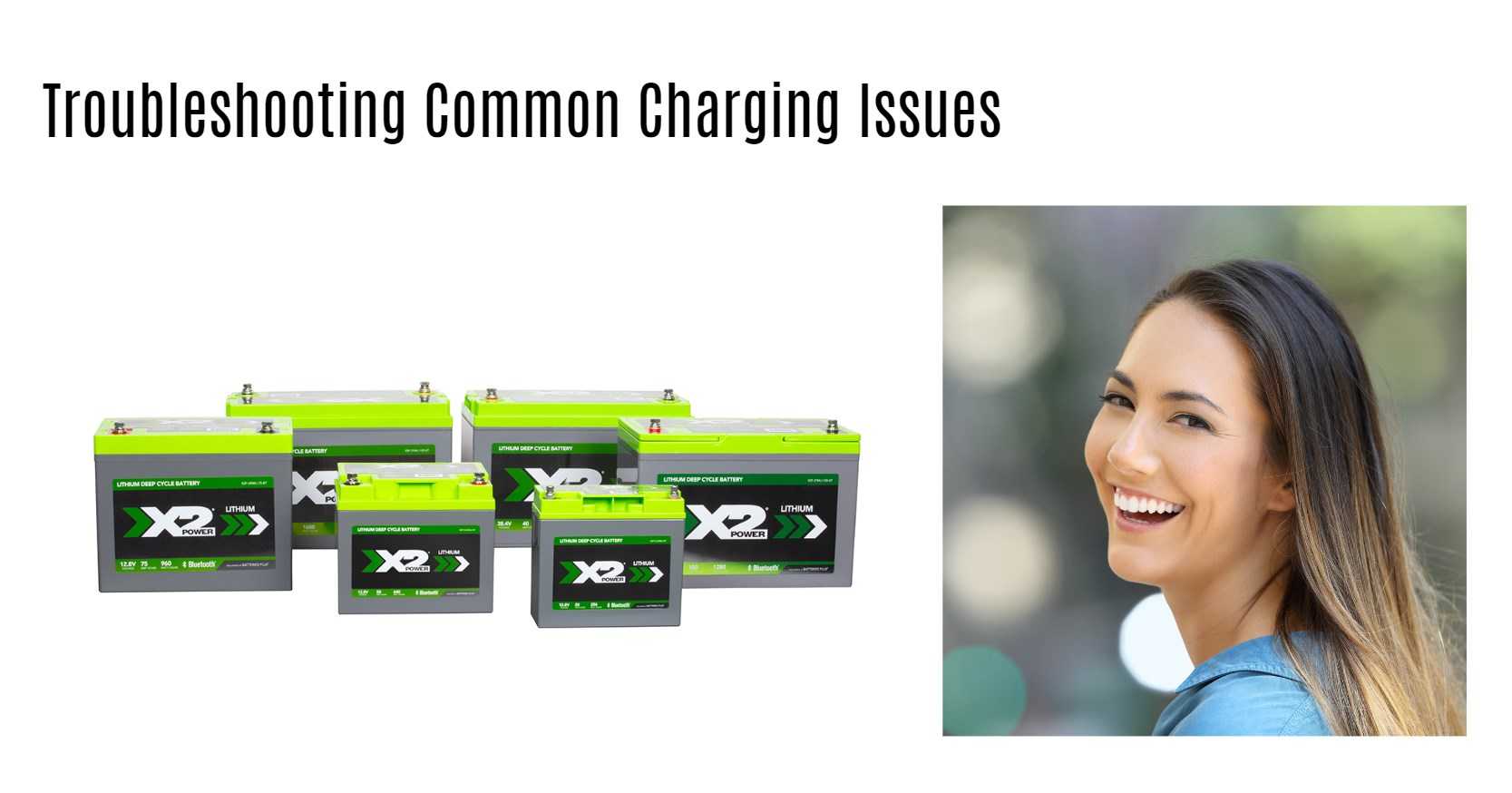Welcome to the Ultimate Guide to Dakota Lithium Battery Charger Instructions: Everything You Need to Know! If you’re new to the world of lithium batteries or just need a refresher on how to properly charge them, you’ve come to the right place. In this comprehensive guide, we’ll dive into all the essential information you need to safely and efficiently charge your Dakota Lithium batteries.
From understanding voltage requirements and charger specifications to troubleshooting common issues and learning about safety precautions, we’ll cover it all. Whether you’re a seasoned pro or a beginner in the world of lithium batteries, this guide will equip you with the knowledge necessary for optimal battery performance.
So grab your favorite beverage, sit back, and let’s explore everything there is to know about charging Dakota Lithium batteries. Let’s power up those devices and get ready for an electrifying adventure!
How to Charge a Lithium Battery
Charging a lithium battery may seem like a daunting task, but fear not! With the right knowledge and equipment, it’s actually quite simple. So let’s dive in and explore the steps to properly charge your lithium battery.
First things first – do you need a special charger for lithium batteries? The answer is yes. Lithium batteries require chargers specifically designed for them. Using the wrong charger can lead to damage or even fire hazards, so always make sure you have the correct charger for your lithium battery.
Next up, let’s talk about voltage requirements. Different types of lithium batteries have different voltage requirements for charging. It’s important to know what voltage range is suitable for your specific battery model to ensure safe and efficient charging.
Now that we’ve covered the basics, how fast can you charge your battery? The speed at which you can charge your lithium battery depends on various factors such as its capacity and the charger’s output current. It’s essential to refer to the manufacturer’s instructions or specifications for recommended charging times.
Speaking of chargers, which brand should you use for LiFePO4 batteries? Dakota Lithium offers reliable and high-quality chargers specifically designed for their LiFePO4 batteries. These chargers provide optimal performance and safety during the charging process.
But what if you want to go eco-friendly with solar panels? Good news! You can indeed charge your lithium batteries using solar panels through a compatible solar charger. This allows you to harness renewable energy while keeping your devices powered up in remote locations or during outdoor adventures.
If you’re wondering whether an onboard charger can be used with lithium batteries, the answer is yes – but with caution. Not all onboard chargers are suitable for lithium batteries due to differences in charging algorithms and voltages required by these types of batteries. Always check compatibility before attempting to use an onboard charger.
For those who rely on their car alternator for charging, a DC-DC charger is essential. Why? Lithium
Do I need a special charger for lithium batteries?
When it comes to charging lithium batteries, it’s important to use the right charger. Unlike traditional lead-acid batteries, lithium batteries require a specialized charger designed specifically for them.
Lithium batteries have different charging characteristics and voltage requirements compared to other battery types. Using the wrong charger can result in damage to the battery or even pose safety risks. Therefore, it is crucial to invest in a charger that is specifically made for lithium batteries.
A special charger for lithium batteries will ensure that your battery is charged at the correct voltage and with the proper charging algorithm. This will help maximize the lifespan of your battery and prevent overcharging or undercharging.
Additionally, some chargers may offer advanced features such as temperature monitoring and automatic shut-off, which are essential for safe and optimal charging of lithium batteries.
Using a special charger designed for lithium batteries is necessary to ensure efficient and safe charging. Investing in a high-quality charger will not only protect your battery but also extend its lifespan, ultimately saving you time and money in the long run.
What voltage is required to charge my lithium batteries?
When it comes to charging lithium batteries, understanding the required voltage is crucial. Different types of lithium batteries have varying voltage requirements for optimal charging. For example, most LiFePO4 (lithium iron phosphate) batteries require a specific voltage range to charge effectively.
Typically, LiFePO4 batteries need a charging voltage between 14.2V and 14.6V per cell. This means that if you have a 12V battery comprised of four cells in series, the overall charging voltage would be around 57-58.4 volts.
It’s important to note that using higher voltages than recommended can lead to overcharging and damage the battery’s longevity and performance. On the other hand, using lower voltages may result in incomplete or slow charging.
To achieve the correct voltage for your lithium battery, it is advisable to use a charger specifically designed for lithium batteries with adjustable settings. This way, you can ensure that your battery receives the appropriate amount of charge without any risk of under or overcharging.
Always refer to the manufacturer’s instructions and specifications when determining the necessary voltage for your particular lithium battery model as each brand might have slight variations in their requirements.
How fast can I charge my battery?
How fast can I charge my battery? The charging speed of a lithium battery depends on several factors, including the capacity of the battery, the charger’s output current, and the state of charge of the battery.
Generally, lithium batteries can be charged at a rate between 0.5C and 1C. C represents the capacity of the battery in ampere-hours (Ah). For example, if you have a 10Ah battery, you can charge it at a maximum rate of 10A or less.
It’s important to note that charging your battery too quickly can lead to overheating and reduce its overall lifespan. It is recommended to refer to the manufacturer’s instructions for specific charging guidelines.
Additionally, some chargers offer fast-charging capabilities that allow you to charge your battery at even higher rates. However, it’s crucial to ensure that both your charger and your battery support fast-charging before attempting this method.
Remember that safety should always be prioritized when charging lithium batteries. Always use chargers specifically designed for lithium batteries and follow all recommended charging procedures provided by the manufacturer.
Which lithium charger brand can I use for LiFePO4 batteries?
When it comes to charging LiFePO4 batteries, not all lithium charger brands are created equal. It’s important to choose a charger specifically designed for these types of batteries in order to ensure optimal performance and longevity.
One reputable brand that stands out in the industry is Dakota Lithium. Known for their high-quality products, Dakota Lithium offers a range of chargers specifically designed for LiFePO4 batteries.
Their chargers are engineered with advanced technology to provide efficient and safe charging. They offer options such as the Dakota Lithium 12V 3A LiFePO4 Battery Charger, which is suitable for various applications.
By using a charger from a trusted brand like Dakota Lithium, you can have peace of mind knowing that your LiFePO4 batteries will be charged properly and efficiently. This not only helps prolong the lifespan of your batteries but also ensures they perform at their best when you need them most.
So if you’re looking for a reliable lithium charger brand for your LiFePO4 batteries, look no further than Dakota Lithium. With their expertise and dedication to quality, they have proven themselves as a top choice among battery enthusiasts worldwide.
Can I charge my batteries with solar panels via a solar charger?
Solar panels can be a great way to charge your batteries when you’re out in the wilderness or off the grid. But can you use them with a solar charger for your lithium batteries? The answer is yes! Solar chargers are specifically designed to harness the power of the sun and convert it into usable energy for charging your batteries.
When using a solar panel to charge your lithium battery, it’s important to make sure that your solar charger is compatible with lithium batteries. Not all chargers are created equal, so be sure to check the specifications before making a purchase.
One thing to keep in mind is that charging times may vary depending on weather conditions and the size of your solar panel. On sunny days, you can expect faster charging times compared to cloudy or overcast days. It’s also worth noting that larger solar panels will generate more power and therefore charge your battery faster.
Using a solar charger for your lithium batteries offers many benefits. It allows you to harness clean and renewable energy while being environmentally friendly. Plus, it gives you peace of mind knowing that even when there’s no access to electricity, you can still keep your devices powered up.
So go ahead and take advantage of those sunny days by using a solar charger with your lithium batteries. It’s an efficient and sustainable way to stay charged up wherever life takes you!
Can I use an onboard charger to charge lithium batteries?
Can I use an onboard charger to charge lithium batteries? This is a common question among those who own boats or RVs equipped with onboard charging systems. The answer depends on the type of lithium battery you have and the capabilities of your onboard charger.
Lithium batteries, specifically LiFePO4 batteries, require a specific charging profile that differs from traditional lead-acid batteries. While some newer onboard chargers may be compatible with charging lithium batteries, it’s important to check the manufacturer’s guidelines to ensure compatibility.
If your onboard charger does not support the appropriate voltage and charging algorithm for lithium batteries, attempting to charge them could result in damage or reduced battery life. It’s always best to consult with the manufacturer or a knowledgeable expert before attempting to charge your lithium batteries using an onboard charger.
In some cases, it may be necessary to invest in a separate lithium-specific charger that is designed to provide optimal charging for these types of batteries. This ensures proper voltage regulation and prevents overcharging or undercharging, which can negatively impact battery performance and lifespan.
Remember, when it comes to charging any type of battery, including lithium-ion ones like Dakota Lithium Batteries; following manufacturer instructions is crucial for safety and longevity!
Can I charge a lithium battery using my car, van, or boat’s alternator?
Yes, you can charge a lithium battery using your vehicle’s alternator. However, there are some considerations to keep in mind.
It is important to note that the voltage output of a car’s alternator typically exceeds the recommended charging voltage for lithium batteries. This means that without proper regulation and control, the high voltage from the alternator can potentially damage or overcharge your lithium battery.
To address this issue, a DC-DC charger is needed to regulate and control the charging process. The DC-DC charger acts as an intermediary between the vehicle’s electrical system and the lithium battery. It converts the higher voltage from the alternator into a suitable charging voltage for your lithium battery.
Using a DC-DC charger ensures safe and efficient charging of your lithium battery while protecting it from potential damage caused by excessive voltage. Additionally, many DC-DC chargers also incorporate features such as temperature compensation and multiple-stage charging algorithms to optimize performance and prolong battery life.
So yes, you can charge your lithium batteries using your car’s alternator with the help of a properly designed DC-DC charger. Just remember to choose a reliable brand that offers compatible chargers for LiFePO4 batteries like Dakota Lithium to ensure optimal performance and longevity of your batteries.
Why is a DC-DC charger needed to charge a lithium battery from a car’s alternator?
When it comes to charging a lithium battery from a car’s alternator, a DC-DC charger is needed for several reasons. The voltage output of a car’s alternator is not suitable for directly charging lithium batteries. The alternator typically produces around 14 volts, which is too high for these types of batteries.
A DC-DC charger acts as an intermediary between the alternator and the battery, regulating the voltage to ensure safe and efficient charging. It converts the higher voltage from the alternator into a lower voltage that is compatible with lithium batteries.
Additionally, lithium batteries require a specific charging profile in order to maximize their lifespan and performance. This includes carefully controlled charge rates and voltages at different stages of the charging process. A DC-DC charger is designed to provide this precise control, ensuring that the battery receives optimal charging conditions.
Furthermore, using a DC-DC charger can help protect both your battery and your vehicle’s electrical system. It prevents excessive current flow or voltage spikes that could potentially damage either component.
Utilizing a DC-DC charger when charging lithium batteries from a car’s alternator is essential for safe and efficient operation while maximizing performance and lifespan of your battery.
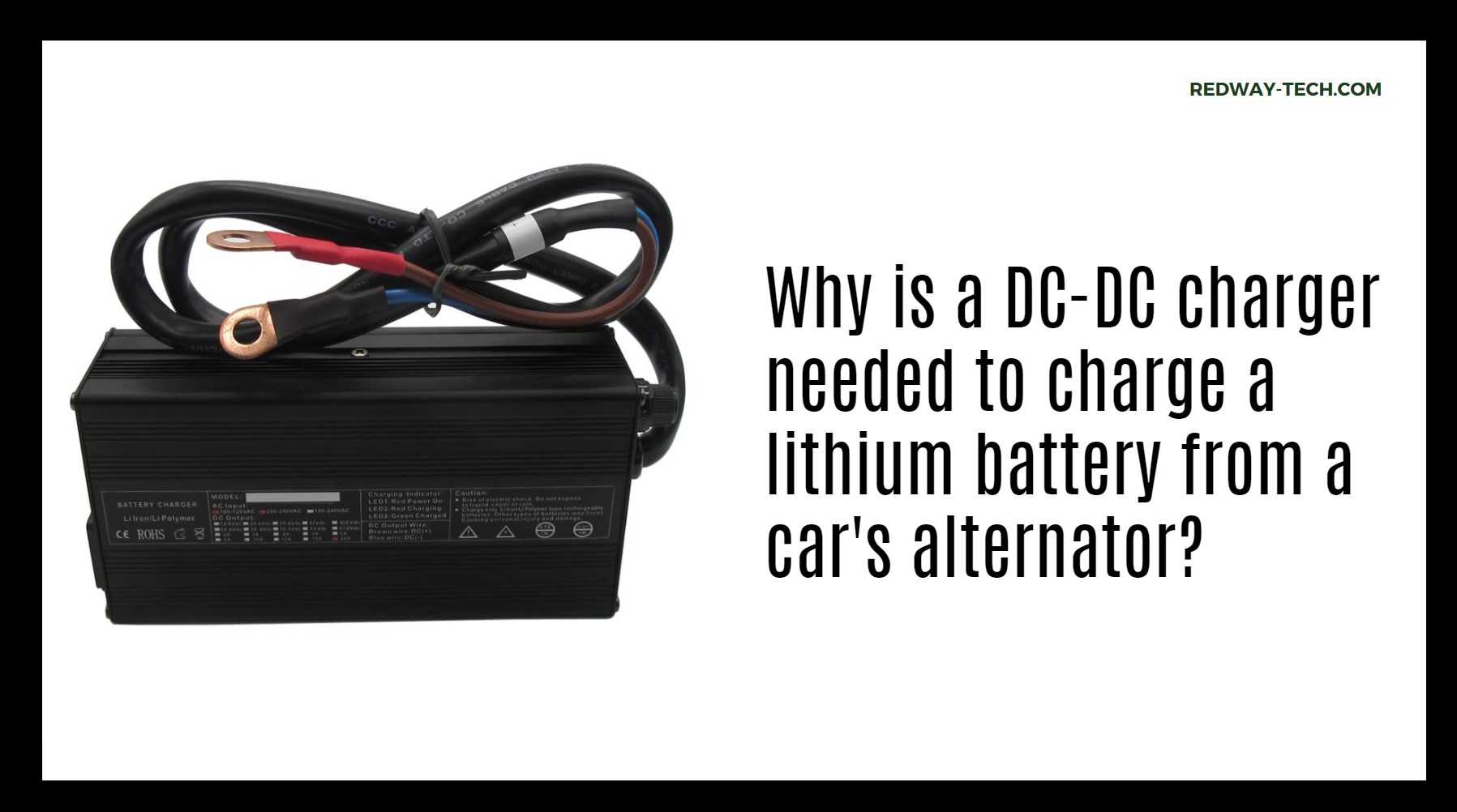
Charger Specifications
When it comes to charging your Dakota Lithium batteries, having the right charger is crucial. The Dakota Lithium 12V 3A LiFePO4 Battery Charger is specifically designed for use with these batteries. It provides a steady and reliable charge, ensuring optimal performance and longevity.
This charger is suitable for a range of battery models, including the Dakota Lithium 12V 10Ah Battery and the Dakota Lithium 12V 7Ah Battery. With its compact size and lightweight design, it’s perfect for taking on camping trips or other outdoor adventures where reliable power is essential.
The charger features an easy-to-read display that shows the current voltage level of your battery, so you can keep track of its progress during charging. It also has built-in safety features to protect against overcharging and overheating.
With its high-quality construction and user-friendly interface, the Dakota Lithium 12V 3A LiFePO4 Battery Charger is a reliable tool for keeping your lithium batteries charged and ready to go whenever you need them. So if you’re in search of a charger that delivers excellent performance without compromising safety, look no further than this top-of-the-line option from Dakota Lithium!
Dakota Lithium 12V 3A LiFePO4 Battery Charger
The Dakota Lithium 12V 3A LiFePO4 Battery Charger is a powerful and efficient charging solution for your lithium batteries. With its compact design and advanced features, this charger is perfect for both everyday use and outdoor adventures.
One of the standout features of this charger is its compatibility with LiFePO4 batteries. Whether you have a Dakota Lithium 12V 10Ah Battery or a Dakota Lithium 12V 7Ah Battery, this charger can safely and effectively charge them to full capacity.
Using the Dakota Lithium 12V 3A LiFePO4 Battery Charger is simple and straightforward. Just connect the charger to your battery using the included alligator clips or ring terminals, plug it into a power source, and let it work its magic. The built-in LED indicator lights will let you know when your battery is fully charged.
With its ability to deliver a constant current of up to 3 amps, this charger can quickly recharge your lithium batteries in no time. This means less downtime waiting for your batteries to charge and more time enjoying whatever activity they power.
Investing in the Dakota Lithium 12V 3A LiFePO4 Battery Charger ensures that you have a reliable charging solution that will help extend the lifespan of your lithium batteries while providing optimal performance every time you need them.
So whether you’re out on an adventure or simply need to keep your backup power supply ready at home, trust the Dakota Lithium 12V 3A LiFePO4 Battery Charger to always keep your batteries charged and ready for action.
Suitable for:
The Dakota Lithium 12V 3A LiFePO4 Battery Charger is designed to be compatible with a range of lithium batteries, making it incredibly versatile. Whether you have the Dakota Lithium 12V 10Ah Battery or the Dakota Lithium 12V 7Ah Battery, this charger has got you covered.
With its intelligent charging system, the Dakota Lithium battery charger ensures that your lithium batteries receive the proper voltage and current during the charging process. This helps to optimize performance and extend their lifespan.
Not only is this charger suitable for use with various Dakota Lithium batteries, but it can also be used with other LiFePO4 batteries as well. So if you have another brand of lithium battery that meets these specifications, feel free to give it a try!
No matter which lithium battery you own, having a reliable and efficient charger like the Dakota Lithium 12V 3A LiFePO4 Battery Charger will ensure that your battery is always ready when you need it most.
Dakota Lithium 12V 10Ah Battery
The Dakota Lithium 12V 10Ah Battery is a powerhouse when it comes to long-lasting energy. With its high capacity and durable construction, this battery is perfect for powering your electronic devices on the go.
One of the standout features of this battery is its lightweight design. Weighing in at just over 2 pounds, it won’t weigh you down or take up unnecessary space in your backpack or gear bag. This makes it ideal for outdoor enthusiasts who need reliable power without added bulk.
In addition to its compact size, the Dakota Lithium 12V 10Ah Battery also boasts impressive longevity. With a lifespan that can outlast traditional lead-acid batteries by up to four times, you can count on this battery to keep going strong season after season.
Another great feature of this battery is its compatibility with various charging options. Whether you prefer using a solar charger or an onboard charger, you can easily recharge your Dakota Lithium 12V 10Ah Battery to ensure uninterrupted power wherever you are.
When it comes to performance, this battery truly shines. Its advanced lithium iron phosphate (LiFePO4) chemistry provides steady and consistent voltage output throughout its discharge cycle. This means that even as the battery loses charge, there will be no noticeable drop in performance.
The Dakota Lithium 12V 10Ah Battery offers exceptional reliability and long-lasting power for all your portable energy needs. Whether you’re camping off-grid or simply want a backup power source for emergencies, this battery has got you covered.
Dakota Lithium 12V 7Ah Battery
The Dakota Lithium 12V 7Ah Battery is a powerhouse when it comes to providing reliable and long-lasting power. With its compact size and lightweight design, this battery is perfect for a variety of applications, from powering electronics on your camping trips to running essential equipment in your RV or boat.
One of the standout features of the Dakota Lithium 12V 7Ah Battery is its exceptional lifespan. Unlike traditional lead acid batteries that degrade over time, lithium batteries like this one are built to last. You can expect up to four times the lifespan compared to lead acid batteries, which means fewer replacements and more savings in the long run.
Another great feature of this battery is its fast charging capabilities. With the right charger, you can fully charge your Dakota Lithium 12V 7Ah Battery in just a fraction of the time it would take with other battery types. This means less downtime waiting for your battery to recharge and more time enjoying your favorite activities.
In addition to being quick-charging, this battery also holds its charge exceptionally well. Even after months of storage, you can trust that your Dakota Lithium 12V 7Ah Battery will still have plenty of power when you need it most.
If you’re looking for a reliable and high-performance battery for all your power needs, look no further than the Dakota Lithium 12V 7Ah Battery. Its durability, fast charging capabilities, and long lifespan make it an excellent choice for any application requiring dependable portable power.
How to Use a Dakota Lithium Battery Charger
Using a Dakota Lithium battery charger is simple and straightforward. Here’s a step-by-step guide on how to get started:
1. Connect the charger: Plug one end of the charger into an AC power source and the other end into the charging port of your Dakota Lithium battery.
2. Check the LED indicator: Most Dakota Lithium chargers have an LED indicator that shows the charging status. A red light usually indicates that the battery is being charged, while a green light means it’s fully charged.
3. Set the charging mode (if applicable): Some models may have different charging modes such as “standard” or “fast.” Refer to your specific model’s instructions for any additional settings you need to adjust.
4. Wait for full charge: Allow the charger to complete its charging cycle until it reaches full capacity. This can take several hours depending on your battery’s size and initial charge level.
5. Disconnect and store safely: Once fully charged, unplug both ends of the charger from their respective outlets and carefully disconnect them from each other. Store your batteries in a cool, dry place away from direct sunlight or extreme temperatures.
Remember, always read and follow manufacturer instructions when using any type of battery charger, including those made by Dakota Lithium.
How do I turn a battery back on after the battery management system has turned it off?
Turning a battery back on after the battery management system has turned it off is a common concern among lithium battery users. Fortunately, Dakota Lithium provides easy solutions for this situation.
To turn your battery back on, simply disconnect any loads or devices that may be connected to it. Next, check the voltage of your battery using a voltmeter. If the voltage reads below 11V, you will need to recharge it before turning it back on.
Once the battery is charged and its voltage is above 11V, you can reconnect any devices or loads that were previously disconnected. The battery should automatically turn itself back on and resume normal operation.
It’s important to note that if your battery remains disconnected from any loads for an extended period of time (several weeks), the internal protection circuitry may temporarily disable the output until reconnected to a charger.
By following these simple steps, you can easily turn your Dakota Lithium battery back on after it has been turned off by the built-in Battery Management System (B.M.S.).
How can I calculate the battery’s run time?
Calculating the run time of a battery is essential for planning and managing your power needs. To determine how long your lithium battery will last, you need to consider its capacity and the current draw of your device.
First, find out the capacity of your Dakota Lithium battery. This information can usually be found on the label or in the product specifications. It is typically measured in ampere-hours (Ah).
Next, identify the current draw of your device. You can refer to its user manual or check for labels indicating power consumption. The current draw is usually measured in milliamps (mA) or amps (A).
To calculate the battery’s run time, divide the battery’s capacity by the current draw of your device. For example, if you have a 10Ah battery and your device draws 500mA, the calculation would be as follows: 10Ah / 0.5A = 20 hours.
Keep in mind that this calculation provides an estimate based on ideal conditions and may vary depending on factors such as temperature and usage patterns.
By calculating the run time of your Dakota Lithium batteries accurately, you can better plan for outdoor adventures or ensure uninterrupted power supply for various applications without any guesswork involved!
What happens inside my battery when charging or discharging?
When you charge a lithium battery, a chemical reaction occurs inside the battery. During charging, lithium ions move from the positive electrode (cathode) to the negative electrode (anode) through an electrolyte solution. This process is called intercalation.
As the lithium ions move to the anode, they become embedded in its structure and stored as potential energy. At the same time, electrons are released from the cathode and flow through an external circuit, creating an electric current that can be utilized.
During discharge, the opposite happens. The stored lithium ions at the anode begin to release their stored energy as they move back towards the cathode through the electrolyte solution. This movement of ions generates electricity that powers your devices or equipment.
It’s important to note that this process is reversible; when you recharge your battery again, it allows for another round of intercalation and discharging.
Understanding what happens inside your lithium battery during charging and discharging helps you appreciate how this technology works and how to optimize its performance for longer-lasting power.
At what temperatures can I charge and operate my batteries?
One important factor to consider when charging and operating lithium batteries is the temperature. Extreme temperatures can have a significant impact on the performance and lifespan of your batteries.
In general, it is recommended to charge lithium batteries at temperatures between 32°F and 113°F (0°C – 45°C). Charging outside this range may lead to reduced battery efficiency or even damage.
When it comes to operating the batteries, they can typically be used within a wider temperature range. Most lithium batteries can operate safely between -4°F and 140°F (-20°C – 60°C). However, keep in mind that extreme cold or hot temperatures may affect their performance and capacity.
It’s worth noting that high temperatures can accelerate the aging process of lithium batteries, leading to decreased capacity over time. On the other hand, extremely low temperatures can cause temporary power loss until the battery warms up again.
To ensure optimal performance and longevity of your Dakota Lithium battery charger instructions suggest storing them in moderate room temperature conditions when not in use.
How should I store my battery? Does it self-discharge?
Storing your Dakota Lithium battery properly is essential for maintaining its performance and prolonging its lifespan. When it comes to storage, there are a few key considerations to keep in mind.
It is important to store your battery in a cool and dry place. Extreme temperatures can negatively impact the performance of lithium batteries, so avoid exposing them to excessive heat or cold.
Always make sure that your battery is partially charged before storing it for an extended period. A charge level between 30% and 50% is ideal. This helps prevent over-discharge during storage which can lead to capacity loss.
Additionally, it’s essential to remember that lithium batteries have a self-discharge rate. Over time, even when not in use, they will naturally lose some of their charge. To mitigate this self-discharge effect, you should periodically check and recharge your stored batteries every three months or so.
Ensure that you store your lithium battery away from flammable materials or sources of ignition as a safety precaution.
By following these guidelines for proper storage, you can maximize the lifespan and performance of your Dakota Lithium battery.
How do I use a voltmeter?
How do I use a voltmeter? Using a voltmeter to measure the voltage of your lithium battery is a simple process. First, ensure that the voltmeter is set to the appropriate range for your battery’s voltage. For example, if you have a 12V battery, set the voltmeter to measure within that range.
Next, connect the positive (red) probe of the voltmeter to the positive terminal of your battery and the negative (black) probe to the negative terminal. Make sure there is good contact between the probes and terminals.
Once connected, turn on your voltmeter and observe the reading displayed on its screen. This will give you an accurate measurement of your battery’s voltage at that particular moment.
It’s important to note that when measuring voltage, it’s best to take multiple readings over time in order to get a more accurate picture of how well-charged or depleted your battery is. This can help you monitor its performance and determine if it needs recharging or replacing.
Using a voltmeter is an essential tool for any lithium battery owner as it allows you to keep track of your battery’s health and make informed decisions about its usage.
How can I connect my batteries in series and parallel circuits?
When it comes to connecting batteries in series and parallel circuits, understanding the basics is key. In a series circuit, you connect the positive terminal of one battery to the negative terminal of another battery. This increases your overall voltage while keeping your current constant.
On the other hand, in a parallel circuit, you connect all the positive terminals together and all the negative terminals together. This keeps your voltage constant while increasing your overall current capacity.
It’s important to note that when connecting batteries in series or parallel, make sure they have similar capacities and voltages for optimal performance. Mismatched batteries can lead to imbalances and potentially damage your batteries.
Additionally, be cautious when connecting different types of batteries (such as mixing lithium and lead acid) as they may have different charging requirements which could result in suboptimal performance or potential safety risks.
Understanding how to properly connect batteries in series and parallel circuits ensures that you maximize their potential and prolong their lifespan. So take the time to educate yourself on this topic before diving into any battery setups!
How are Dakota Lithium batteries designed to work in Lead Acid battery systems?
Dakota Lithium batteries are designed to seamlessly integrate into lead acid battery systems, providing a more efficient and reliable power source. Unlike traditional lead acid batteries, Dakota Lithium batteries utilize advanced lithium iron phosphate (LiFePO4) technology, which offers numerous advantages.
One key advantage is the compatibility with existing lead acid battery charging systems. Dakota Lithium batteries can be charged using standard lead acid chargers without any modifications or additional equipment. This makes it easy for users to transition from lead acid to lithium batteries without having to invest in new charging infrastructure.
In addition, Dakota Lithium batteries have a much longer lifespan compared to lead acid batteries. They can withstand thousands of charge-discharge cycles, while still maintaining their capacity and performance. This longevity translates into cost savings over time as there is no need for frequent battery replacements.
Furthermore, Dakota Lithium batteries are significantly lighter than their lead acid counterparts. This weight reduction not only improves mobility but also reduces strain on vehicles or equipment where the battery is installed.
The design of Dakota Lithium batteries allows them to seamlessly integrate into existing lead acid battery systems while offering superior performance and longevity. Whether you’re using them in marine applications, recreational vehicles, or other power-hungry devices – these lithium batteries are sure to deliver reliable and efficient power every time.
What if one battery loses charge faster in a circuit?
What if one battery loses charge faster in a circuit? Well, this can be a common issue when multiple batteries are connected in series or parallel. When you connect batteries together, it’s important to ensure that they have similar capacities and voltages. If one battery has a lower capacity or higher internal resistance than the others, it can cause an imbalance in the circuit.
When one battery loses charge faster than the others, it can lead to uneven performance and reduced overall runtime. The weaker battery may discharge more quickly and reach its minimum voltage threshold before the others, causing the entire system to shut down prematurely.
To address this issue, it’s recommended to regularly monitor and balance your batteries. Balancing involves equalizing their state of charge by transferring energy between them until they have approximately the same voltage levels.
There are different methods for balancing batteries depending on your setup. Some chargers have built-in balancing capabilities that automatically adjust charging currents for each individual cell within a battery pack. Alternatively, you can use external balancers or manually charge each battery individually using matching charger settings.
By addressing any imbalances promptly, you can optimize performance and extend the lifespan of your batteries in a circuit configuration.
Safety Precautions for Charging Lithium Batteries
When it comes to charging lithium batteries, safety should always be a top priority. These powerful energy storage devices require careful handling and proper precautions to avoid any mishaps.
First and foremost, it’s essential to use the correct charger specifically designed for lithium batteries. Using the wrong charger can lead to overcharging or even damaging the battery. Always follow the manufacturer’s instructions regarding compatibility.
Additionally, make sure you are in a well-ventilated area when charging your lithium battery. This helps dissipate heat generated during the process and reduces the risk of overheating or fire hazards.
Never leave your lithium battery unattended while charging. It’s crucial to keep an eye on it at all times to monitor its progress and detect any potential issues promptly.
Avoid exposing your lithium battery to extreme temperatures during charging as this can affect its performance and lifespan. Ideally, charge your battery at room temperature or within the recommended range provided by the manufacturer.
Never attempt to modify or tamper with your lithium battery charger or battery pack. Doing so can result in damage or injury due to improper handling.
By following these safety precautions, you can ensure a smooth and secure charging experience for your valuable lithium batteries without compromising their performance or safety standards.
Safety: How Safe are Lithium Iron Phosphate Batteries?
Lithium iron phosphate (LiFePO4) batteries have gained popularity due to their superior safety features compared to other types of lithium batteries. One of the main concerns with lithium batteries is their tendency to overheat and potentially catch fire, but LiFePO4 batteries are designed with built-in safety mechanisms that greatly reduce this risk.
LiFePO4 batteries have a stable chemistry that makes them less prone to thermal runaway, which is the phenomenon responsible for battery fires. Additionally, these batteries have a higher thermal stability compared to other lithium chemistries.
Furthermore, LiFePO4 batteries incorporate advanced battery management systems (BMS) that monitor and control various parameters such as voltage, current, temperature, and state-of-charge. This BMS helps prevent overcharging or discharging the battery beyond safe limits.
Moreover, LiFePO4 batteries are inherently more resistant to short circuits due to their low internal resistance. This means they are less likely to generate sparks or heat up excessively in case of accidental puncture or damage.
While no battery technology can be considered 100% risk-free, LiFePO4 batteries offer significantly improved safety compared to other lithium chemistries. It’s important though always follow manufacturer guidelines and take appropriate precautions when handling and charging any type of battery.
Troubleshooting Common Battery Charging Issues
Having trouble charging your lithium battery? Don’t worry, you’re not alone. Many people encounter common issues when it comes to charging their batteries. Let’s take a look at some troubleshooting tips that can help you get back on track.
One of the most common problems is a dead battery that won’t charge. Before assuming the worst, check the connections between your charger and battery. Make sure everything is securely plugged in and there are no loose wires or damaged connectors.
If your battery still won’t charge, it could be due to a faulty charger. Try using a different charger to see if that solves the problem. It’s also worth checking if your charger is compatible with lithium batteries, as not all chargers are designed for this type of battery.
Another issue you might encounter is slow charging. If your battery takes an unusually long time to charge, make sure you’re using a charger with sufficient voltage and current output for your specific battery model. Using an underpowered charger can significantly prolong the charging process.
Overheating during charging is another common problem that can occur with lithium batteries. If you notice excessive heat coming from your battery while it’s being charged, stop the charging process immediately and allow the battery to cool down before attempting again.
Remember that safety should always be a priority when dealing with lithium batteries. Never leave them unattended while they’re being charged and avoid overcharging or discharging them beyond their recommended limits.
By following these troubleshooting tips, you’ll have a better chance of resolving any issues you may encounter while trying to charge your lithium battery effectively.
Why won’t my lithium battery charge? How to troubleshoot battery problems
Why won’t my lithium battery charge? This is a common question that many people ask when they are experiencing issues with their battery. There could be several reasons why your lithium battery is not charging properly, and troubleshooting these problems can help you find a solution.
First, check the connections between the charger and the battery. Make sure there are no loose or damaged wires, as this can prevent proper charging. Also, ensure that the charger is compatible with your specific lithium battery model.
Next, examine the charger itself. Is it plugged in correctly? Is it functioning properly? Sometimes, simply unplugging and re-plugging the charger can resolve any minor issues.
If these steps don’t solve the problem, consider checking the voltage of your lithium battery using a voltmeter. A low voltage reading may indicate that your battery needs to be replaced.
Additionally, keep in mind that extreme temperatures can affect lithium batteries’ performance. If you’re trying to charge your battery in extremely hot or cold conditions, it may not function optimally.
In conclusion: troubleshooting charging issues with your lithium battery requires careful examination of connections, compatibility with chargers and voltages readings using a voltmeter.
What is the battery voltage when my battery is full or depleted?
Battery voltage can be a key indicator of the state of charge of your lithium battery. When a battery is fully charged, its voltage will reach its maximum capacity. For Dakota Lithium batteries, this is typically around 14.4 volts for a 12V battery. However, it’s important to note that different lithium chemistries and manufacturers may have slightly different voltage ranges.
On the other hand, when a battery is depleted or discharged, its voltage will drop significantly. In the case of Dakota Lithium batteries, you can expect the voltage to be around 11 volts when the battery is nearly empty.
It’s worth mentioning that these voltages are general estimates and can vary depending on factors such as temperature and load conditions. It’s always best to consult your specific battery manufacturer‘s recommendations for accurate information.
Monitoring your battery voltage regularly can help you gauge its state of charge and plan accordingly for recharging or replacement if necessary. Remember to use a voltmeter or multimeter designed for measuring DC (direct current) voltages accurately.
Understanding what the battery voltage indicates at full or depleted states can help you optimize performance and ensure reliable power supply from your lithium batteries.
What is the B.M.S.?
The Battery Management System (B.M.S.) is a crucial component in lithium battery technology. It serves as the brain behind the efficient and safe operation of your Dakota Lithium batteries.
The B.M.S. monitors various parameters such as voltage, current, temperature, and state of charge to ensure optimal performance and protection against overcharging or discharging.
With its sophisticated algorithms, the B.M.S. actively controls charging and discharging processes to prevent any damage to the battery cells. It also balances individual cell voltages to maintain uniformity across all cells in a battery pack.
By constantly monitoring and managing these parameters, the B.M.S. maximizes battery life while preventing issues like thermal runaway or excessive discharge that could lead to permanent damage.
In addition to its protective functions, some advanced B.M.S. models also offer features like built-in diagnostics, data logging capabilities for troubleshooting purposes, and communication interfaces for remote monitoring or integration with other systems.
Having a reliable Battery Management System ensures that your Dakota Lithium batteries operate efficiently and safely throughout their lifespan – giving you peace of mind while powering your adventures!
Additional Tips and Information
1. How to Balance Batteries in Series:
When connecting multiple lithium batteries in series, it’s crucial to ensure they are properly balanced. This means that each battery has the same voltage level. To achieve this, you can use a battery balancer or charge each battery individually before connecting them in series.
2. Charge Each Battery Individually for Greater Performance & Lifespan:
To maximize the performance and lifespan of your Dakota Lithium batteries, consider charging them individually instead of charging them as a whole bank. This allows for better monitoring and control over each battery’s charging process, ensuring optimal conditions for long-term usage.
3. How Long Will My Battery Hold a Charge?
The runtime of your Dakota Lithium battery depends on various factors such as the capacity of the battery, the power demands of your devices, and environmental conditions. It is recommended to check the product specifications or reach out to Dakota Lithium for more specific information regarding run time.
4. How to Install Dakota Lithium Batteries on a Hobie Pro Angler 14 Fishing Kayak:
For those using a Hobie Pro Angler 14 fishing kayak and looking to install Dakota Lithium batteries, there are several resources available online with step-by-step instructions and video tutorials demonstrating how to properly install these batteries onto your kayak.
Remember that proper installation is essential not only for efficient operation but also for safety reasons when dealing with electrical components near water.
These additional tips provide valuable insights into maximizing performance and maintaining safety when using Dakota Lithium batteries.
Keep exploring our Ultimate Guide!
How to Balance Batteries in Series Charge Each Battery Individually for Greater Performance & Lifespan
To ensure optimal performance and lifespan of your lithium batteries, it is important to balance the batteries when they are connected in series. Balancing the batteries helps distribute the charge evenly among them, preventing one battery from being overcharged or discharged compared to others.
One way to balance batteries in series is by charging each battery individually before connecting them together. This ensures that each battery has an equal charge level before they are linked. To do this, you can use a multi-battery charger or separate chargers for each battery.
When charging individual batteries, make sure to monitor their voltage levels closely. It’s recommended to use a voltmeter or a battery management system (BMS) with balancing capabilities. The BMS will help maintain balanced voltages across all the connected batteries by adjusting the charging current accordingly.
By following this method of charging each battery individually and monitoring their voltage levels, you can extend the overall performance and lifespan of your lithium batteries in a series circuit. Remember that proper maintenance and care play crucial roles in maximizing the efficiency of your battery setup!
How Long Will My Battery Hold a Charge?
When it comes to lithium batteries, one common concern is how long they will hold a charge. After all, nobody wants to be left stranded with a dead battery! The good news is that Dakota Lithium batteries are known for their impressive longevity.
The exact duration of time that your battery will hold a charge depends on various factors such as the capacity of the battery, the power demands of your devices or equipment, and how you use and maintain your battery.
Generally speaking, Dakota Lithium batteries have an outstanding reputation for holding their charge much longer than traditional lead-acid batteries. In fact, they can hold up to 80% of their initial capacity even after hundreds or thousands of charging cycles!
To maximize the lifespan and performance of your Dakota Lithium battery, it’s important to follow proper charging practices and avoid over-discharging the battery. Regularly monitoring the voltage level using a voltmeter can help you determine when it’s time to recharge.
By taking care of your Dakota Lithium battery and following recommended guidelines for usage and maintenance, you can expect it to provide reliable power for an extended period. Whether you’re out on an adventure or relying on portable energy in everyday life, having confidence in your battery’s ability to hold its charge is crucial – and with Dakota Lithium batteries, you won’t be disappointed!
How to Install Dakota Lithium Batteries on a Hobie Pro Angler 14 Fishing Kayak
Installing Dakota Lithium Batteries on a Hobie Pro Angler 14 Fishing Kayak is a straightforward process that can greatly enhance your fishing experience.
To begin, gather the necessary tools and materials: Dakota Lithium batteries, mounting brackets, screws, and a drill. Start by selecting an appropriate location for the battery installation on your kayak. It’s important to choose a spot that is easily accessible yet secure.
Next, attach the mounting bracket to the chosen location using the provided screws. Make sure it is tightly secured to ensure stability during use. Once the bracket is in place, carefully slide the Dakota Lithium battery into position and fasten it securely with straps or additional hardware if needed.
Ensure all connections are tight and properly insulated to prevent any potential electrical issues while out on the water. Consider adding a waterproof cover or enclosure for added protection against moisture.
Remember to follow any specific instructions provided by Dakota Lithium for your particular model of battery and refer to your kayak’s manual for any additional guidance.
By installing Dakota Lithium batteries on your Hobie Pro Angler 14 Fishing Kayak, you’ll have reliable power for all your fishing adventures without worrying about running out of juice at crucial moments.
Conclusion
In this ultimate guide, we have covered everything you need to know about Dakota Lithium battery charger instructions. From understanding the charging process for lithium batteries to troubleshooting common issues, we’ve got you covered.
When it comes to charging lithium batteries, it’s important to use a compatible charger specifically designed for these types of batteries. Dakota Lithium offers a range of high-quality chargers that are perfect for their LiFePO4 batteries.
You also learned about the importance of voltage requirements and how fast you can charge your battery. Using solar panels or an onboard charger might be options worth considering if you’re looking for alternative ways to charge your lithium battery.
We explored the need for a DC-DC charger when using a car’s alternator and discussed safety precautions associated with charging lithium batteries. Remember, safety should always be a top priority when dealing with any type of battery.
Troubleshooting common issues is also crucial in ensuring your lithium battery functions optimally. By understanding how the B.M.S works and knowing what voltage indicates full or depleted status, you’ll be better equipped to handle any potential problems that may arise.
We provided additional tips and information on balancing batteries in series, maximizing performance and lifespan by individually charging each battery, as well as installation guidelines for Dakota Lithium batteries on specific kayak models like the Hobie Pro Angler 14 Fishing Kayak.
With this comprehensive guide at your fingertips, you now have all the knowledge necessary to effectively utilize Dakota Lithium battery chargers and maintain optimal performance from your lithium batteries.
Remember to always refer back to this guide whenever questions arise or if you need further assistance along the way!



